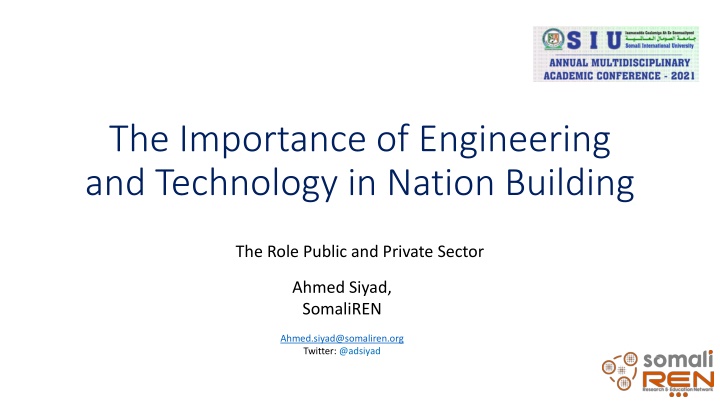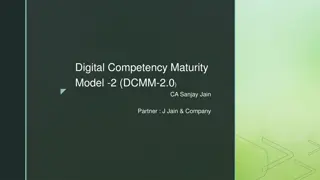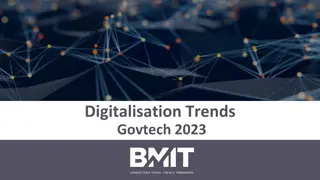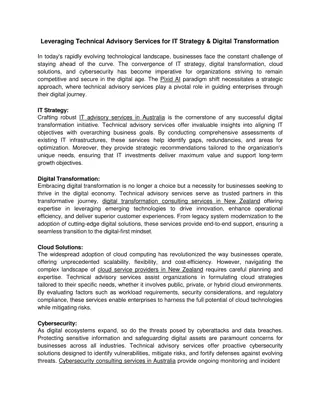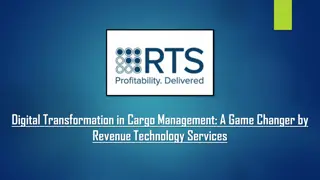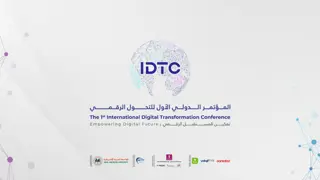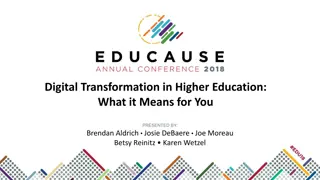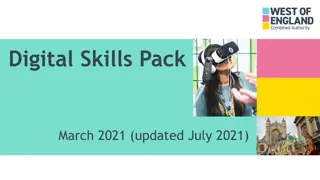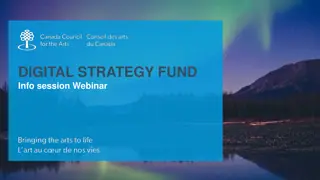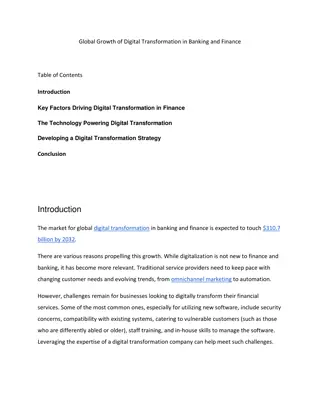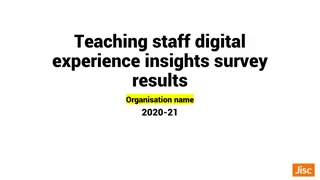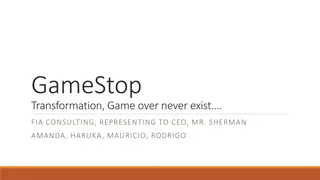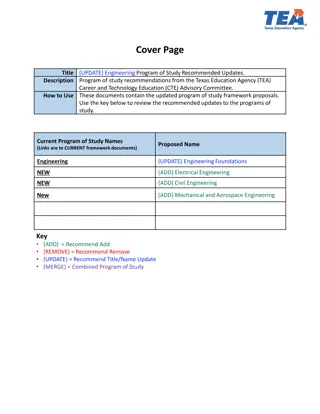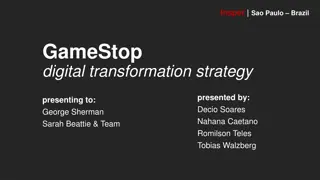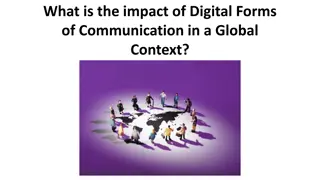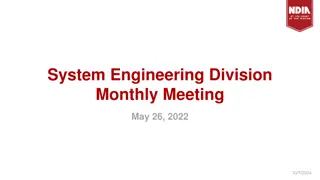Role of Engineering and Technology in Nation Building: Insights on Digital Transformation and Global Trends
Explore the pivotal role of engineering and technology in nation building through insights on digital transformation, global trends, and key elements needed for sustainable development. Delve into the impact of the Fourth Industrial Revolution, challenges in the Somalia ICT sector, and priorities for both public and private sectors. Gain valuable perspective on leadership, coordination, legislation, human capacity, and technology as essential components for successful digital transformation.
Download Presentation

Please find below an Image/Link to download the presentation.
The content on the website is provided AS IS for your information and personal use only. It may not be sold, licensed, or shared on other websites without obtaining consent from the author.If you encounter any issues during the download, it is possible that the publisher has removed the file from their server.
You are allowed to download the files provided on this website for personal or commercial use, subject to the condition that they are used lawfully. All files are the property of their respective owners.
The content on the website is provided AS IS for your information and personal use only. It may not be sold, licensed, or shared on other websites without obtaining consent from the author.
E N D
Presentation Transcript
The Importance of Engineering and Technology in Nation Building The Role Public and Private Sector Ahmed Siyad, SomaliREN Ahmed.siyad@somaliren.org Twitter: @adsiyad
Outline Outline The Global Imperative The Fourth Industrial Revolution 4IR Digital Transformation as Sustainable Development Pathway Key trends and issues Digital Preparedness Key elements in digital transformation Progress and challenges in the Somalia ICT Sector Brief history, current situation and challenges Priorities for governments and private sector Conclusion
The Global Trends 4th Industrial Revolution Source: World Economic Forum
Digital Transformation as Sustainable Development Pathway Source: un.org
Key Global Trends and Issues Key Global Trends and Issues Quickening Fourth Industrial Revolution (implications) Quickly evolving societies and economies Increasingly digital and urban (~70% by 2050) Rising risks: inequality, violence and conflict, environmental pressures, etc. Risks to the promise to leave no one behind
Key Elements of Digital Transformation Key Elements of Digital Transformation Leadership Will - High level political leadership commitment and agreement between all government stakeholders and decision makers is necessary for the proper and effective digital government adoption. Coordination & Financing Institutions - There must be high level coordination of e-government activities among the various departments of government. Legislation and Regulations Though there are no legal prerequisites starting the process of e-government, there are some laws and policies that needs to be looked and developed to support in digitizing and modernizing government administration and services. Human Capacity & Awareness Raising Training programs for civil servants and awareness raising engaging citizens to accept and use government e- services is one the crucial element widely accepted e- government implementation Technology - Rather than investing in application-specific facilities, leaders in digital government look to use increasingly standardized technology infrastructure components including public infrastructure. Leadership Commitment Coordination & Financing Institutions Technology Legislation and regulations Human Capacity & Awareness Raising
Are We Really Ready?? Are We Really Ready??
Where we came from Where we came from From 1998-2005 (based on my personal experience) $1/minute for International calls 10mins = $10 $1/hour per user for 64kb/s International bandwidth (Internet) 3 main Telecom operators through out the country Xeer-jajab was used ICT market regulation There was no proper Internet Service providers ( except cybercaf ) Very view (almost none) local Computer Science and Telecom graduates - mainly depend on foreign engineers Fixed landlines (PSTN) was used as primary voice communication
Where we are now (2021).. Where we are now (2021).. Two submarine Fiber landing stations in Mogadishu, Berbera, Bosaso Approximately of 90% mobile coverage with 52% subscription/users (Source WB and ITU Report 2019) Less than $100/Mb/s for dedicated Internet capacity and $30/Mb/s for shared capacity Very cheap Mobile data ($1/1GB) cheapest in East Africa Stable Mobile Money Business (e-VC, e-Dahab, ZAAD, Sahal, Premier Wallet etc.) Initial stage e-banking and e-commerce business Newly established ICT regulation agency NCA, MoCT
But were still behind in But we re still behind in ICT Market regulation no effective ICT policy and regulations Digital preparedness Internet penetration rate is lower than 3% (source: World Bank and ITU global ICT indicator database, 2018 report) Fair ICT market competition Monopolism There are no accredited or recognized engineering professional boards No national digital agenda leadership commitment towards digital society and Digital skill gap government and academia/private corporation is needed
Everyone has a role to play! Everyone has a role to play!
Government Government Almost every aspect of the Digital Roadmap requires government action.
Private sector Private sector This is not only a matter of the private sector s social obligation, but of mutual benefit.
Conclusion Conclusion ( (Five priorities to get ahead in the Five priorities to get ahead in the digital age digital age) ) The digital roadmap on how developing countries can get ahead Put people at the center of the digital future Build the digital essentials Reach everyone with digital technologies Govern technology for the future
Mahadsanidiin Presentation can be found @ https://sorer.somaliren.org.so/
